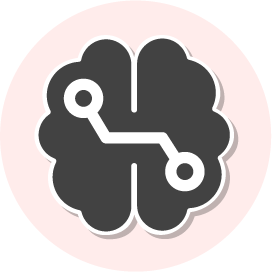The newest technology to shape education is artificial intelligence (AI)—a buzzword we cannot avoid. AI applications are in their infancy, and the common fear of its use is similar to previous fears society has had of any new technological breakthrough. However, when we’re implementing new technology in education and teaching, we must focus on how the technology enhances learning and productivity. Our understanding of AI will evolve as we watch organizations innovate and implement new technology and as we explore how we can leverage AI technology to enhance learning and productivity.

To appropriately adopt new technology, we must begin by establishing useful frameworks for implementation. Let’s imagine you are an instructor who is teaching truck drivers about workplace complacency. In this role, you first want the learners to know the definition of workplace complacency, then to understand what it means for them and the organization. You turn to AI Assist to help you.
Follow these steps for implementing AI technology in the educational setting:
- Define the enduring understandings of the content—in this case, workplace complacency—and the objectives.
Enduring understandings are those points you want the learner to remember years from now; they are the essential elements. After the details have gone from memory, what do you want learners to remember about the content? This is the part of the lesson you repeat and drive home.
Example: For this topic, I want learners to remember that, as truck drivers, being complacent at work could mean the difference between life and death.
Objectives are concrete and measurable actions that a learner will be able to demonstrate after they have completed the learning. How will you know they have learned what you want them to learn? What will they demonstrate?
Example: The learner will be able to verbally define workplace complacency to their manager during a coaching session.

- Think of AI Assist as an assistant for generating content—in this case, defining the term workplace complacency. AI Assist does not replace the subject matter expert, primary author, or instructor.
When asked to define workplace complacency, AI Assist generated the following content:Workplace complacency refers to a state where employees become indifferent or satisfied with their work, leading to a decline in productivity, quality, and innovation. It can negatively impact the overall performance of an organization and hinder its growth. Addressing complacency requires fostering a culture of continuous improvement, providing feedback and recognition, setting challenging goals, and promoting a sense of purpose among employees. Regular communication and employee engagement initiatives can also help combat complacency in the workplace.
This excerpt was copied directly from an AI Assist tool. The content is pertinent, but it misses aligning with the enduring understanding and objective and fails to create authenticity and a genuine connection with the audience. The subject matter expert must build alignment between the enduring understanding, the objective, and the audience.

- Ensure the content generated by AI Assist is accurate and compliant. Just because AI Assist generates information does not mean it is correct or aligned with your objectives.
At its core, the definition generated by AI Assist appears to define workplace complacency. However, the learner will not remember this definition because it lacks real human connection and it does not specifically apply to the learners’ situation as truck drivers. The context of the words is missing. The ideas offered, though, help the instructor frame the definition.

- Review the content, add your voice and tone, and personalize and edit the content to fit your objectives for the workplace complacency lesson.
AI Assist provides the user with content to get started, but as the expert, you need to connect this content to the learners you’re trying to reach. You must ensure the content aligns and resonates with your audience and supports their enduring understanding. Since you are not the source of the AI Assist content, you must also verify that the content is accurate and correct (similar to the content you find on the internet).
When you edit the AI-generated content, keep your audience in mind as you craft an overview using relatable and relevant content.
Example:Think about a time when you drove to a location only to discover you arrived without remembering how you got there. In this scenario, your mind was on autopilot. The brain took a shortcut, and your mind started to wander. Workplace complacency can lead to a decline in your work and productivity. In a split second, your mind could drift, and you could drive off the road. Our clients depend on you, our company depends on you, and your family depends on you. We want you to return home alive.

Generic words on paper do not change behavior. To impact learning, you must be thoughtful and connect with learners. AI Assist can help generate ideas, but it is up to you, the author, to bring the learning to life. Remember, technology is a tool that can enhance learning and productivity. It will never replace the subject matter expert who is needed in all learning experiences.
